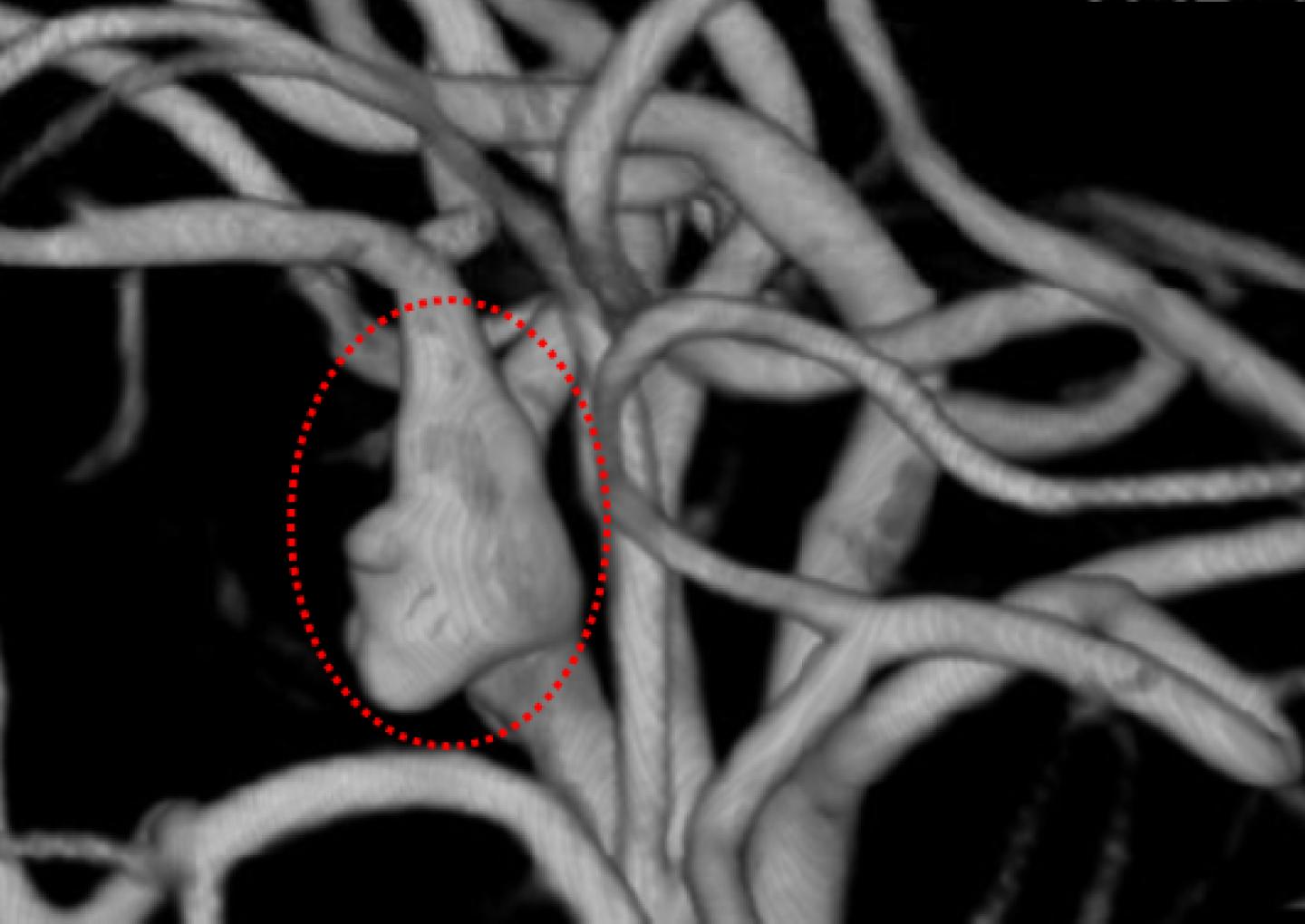Research uncovers a new genetic basis of a form of brain aneurysm, and suggests that it could be treated by an existing drug currently used to tackle cancer

Credit: Taken directly from paper published in American Journal of Human Genetics, May 2019
- Brain aneurysms are relatively common, affecting around 2% of the general population
- Carrying a high risk of death, they can only be treated with difficult surgical procedures
- New research, which identifies a new genetic basis of a specific type of brain aneurysm, found that this abnormality could be countered by an existing family of anti-cancer drugs
An important class of drug used to treat cancer patients could be used to treat brain aneurysms, according to new research published this week.
Brain aneurysms are a bulge in a blood vessel caused by a weakness in the blood vessel wall. As blood passes through the weakened blood vessel, blood pressure causes a small area to bulge outwards.
They can develop anywhere in the body but are most common in the abdominal aorta (the artery that carries blood away from the heart) and the brain.
It’s difficult to estimate exactly how many people are affected by brain aneurysms as they usually cause no symptoms until they rupture, but experts believe it could be anywhere from 1 in 100 to as many as 1 in 20 people.
Treatment is difficult, involving complex surgery which is currently only attempted in select cases. In a notable example, Game of Thrones actress Emilia Clarke suffered from two aneurysms while filming the series, undergoing surgery as a result.
Working in collaboration with colleagues at University of Washington School of Medicine in Seattle, USA, scientists at the University of Sussex may now have found a safer and more efficient possible treatment involving ‘Receptor tyrosine kinase inhibitors’; a class of drug currently used to treat cancer.
Using sophisticated ‘next generation’ DNA sequencing technologies, teams in Washington lead by Manuel Ferreira, Associated Professor of Neurological Surgery, identified a new genetic basis of a form of brain aneurysm (mutations PDGFRB). This was unexpected, as mutations in this gene have been previously identified in completely different human developmental disorders.
Mark O’Driscoll, Professor of Human Molecular Genetics at the Genome Damage and Stability Centre at the University of Sussex, then found that multiple disease-associated mutations in PDGFRB caused a specific abnormality in its encoded protein. This abnormality causes its activity to remain locked in a hyper-active form, referred to as ‘gain-of-function variants’ – in effect, causing the protein to always be ‘turned-on’.
Publishing their findings in this months’ edition of the American Journal of Human Genetics, the Sussex team also demonstrated that this abnormal form of the protein can, in some cases, be countered by a drug which is currently used in cancer treatments.
Professor O’Driscoll said: “This is an extremely exciting discovery which shows how basic lab-derived observations on a genetic level can move into a clinical setting and start making big changes to public healthcare and treatments.
“Our research focused primarily on understanding the genetic and cellular mechanisms underlying a particular type of aneurysm.
“By finding a new genetic basis in some patients, we were also able to demonstrate that a known cancer drug could counter this genetic basis in most instances.
“Understanding the genetics behind diseases like this is crucial in identifying possible treatments and next steps – and that is exactly what our part in this new research has shown.
“The lead authors and our collaborators on this paper based in the US, are now working on the next stages to test this drug further.”
Drug repurposing is not unheard of, and there are already some success stories including the use of thalidomide as a treatment for leprosy as well as a blood cancer called multiple myeloma.
Dr Manuel Ferreira, lead author of the report from the University Of Washington School Of Medicine, said: “We are now very close to treating these aneurysm patients with PDGFRB variants with specific receptor tyrosine kinase inhibitors”.
###
Media Contact
Stephanie Allen
[email protected]
Original Source
https:/
Related Journal Article
http://dx.




